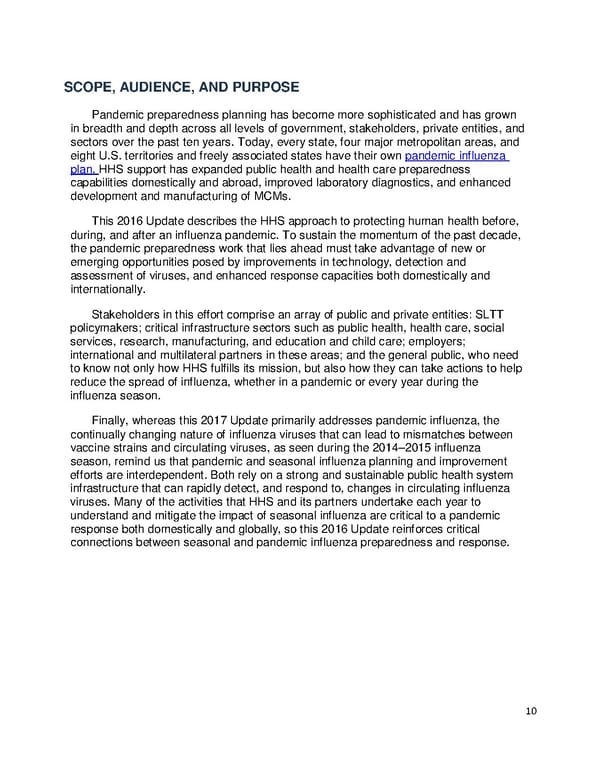SCOPE, AUDIENCE, AND PURPOSE Pandemic preparedness planning has become more sophisticated and has grown in breadth and depth across all levels of government, stakeholders, private entities, and sectors over the past ten years. Today, every state, four major metropolitan areas, and eight U.S. territories and freely associated states have their own pandemic influenza plan. HHS support has expanded public health and health care preparedness capabilities domestically and abroad, improved laboratory diagnostics, and enhanced development and manufacturing of MCMs. This 2016 Update describes the HHS approach to protecting human health before, during, and after an influenza pandemic. To sustain the momentum of the past decade, the pandemic preparedness work that lies ahead must take advantage of new or emerging opportunities posed by improvements in technology, detection and assessment of viruses, and enhanced response capacities both domestically and internationally. Stakeholders in this effort comprise an array of public and private entities: SLTT policymakers; critical infrastructure sectors such as public health, health care, social services, research, manufacturing, and education and child care; employers; international and multilateral partners in these areas; and the general public, who need to know not only how HHS fulfills its mission, but also how they can take actions to help reduce the spread of influenza, whether in a pandemic or every year during the influenza season. Finally, whereas this 2017 Update primarily addresses pandemic influenza, the continually changing nature of influenza viruses that can lead to mismatches between vaccine strains and circulating viruses, as seen during the 2014–2015 influenza season, remind us that pandemic and seasonal influenza planning and improvement efforts are interdependent. Both rely on a strong and sustainable public health system infrastructure that can rapidly detect, and respond to, changes in circulating influenza viruses. Many of the activities that HHS and its partners undertake each year to the impact of seasonal influenza are critical to a pandemic understand and mitigate response both domestically and globally, so this 2016 Update reinforces critical connections between seasonal and pandemic influenza preparedness and response. 10
 Pandemic Influenza Plan Page 9 Page 11
Pandemic Influenza Plan Page 9 Page 11